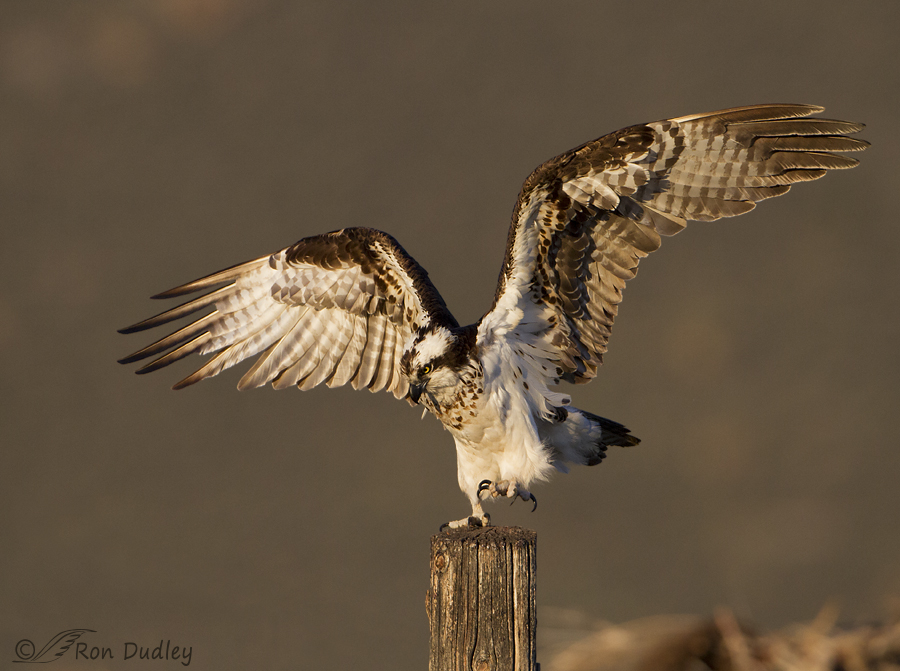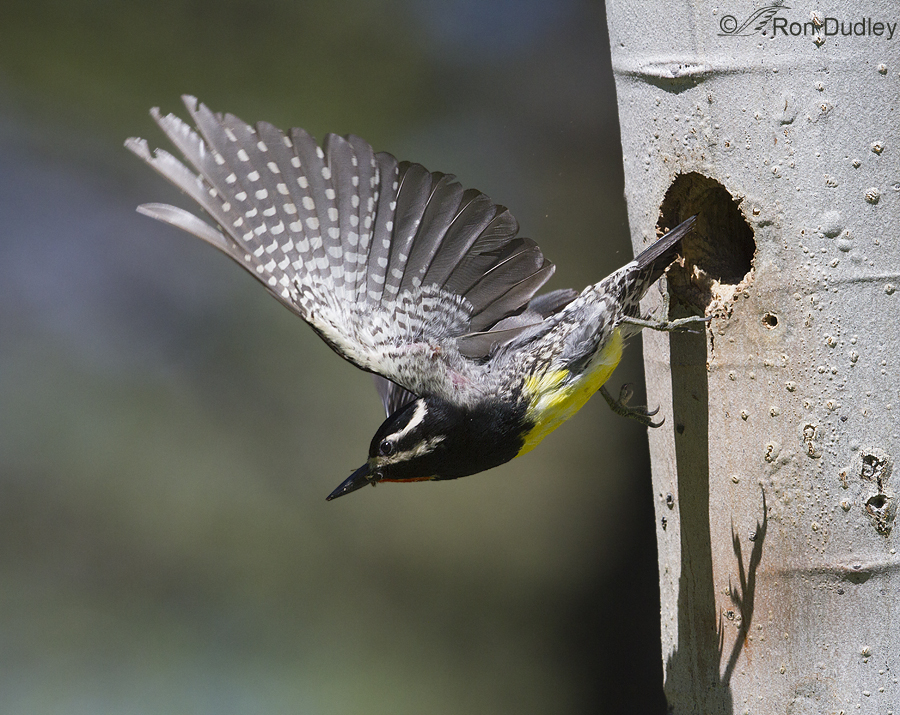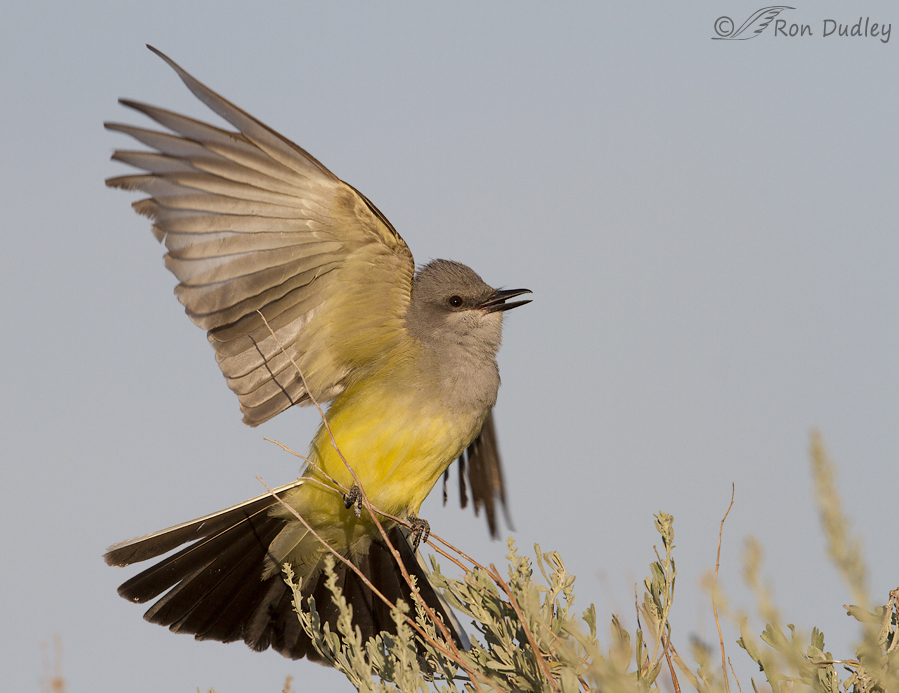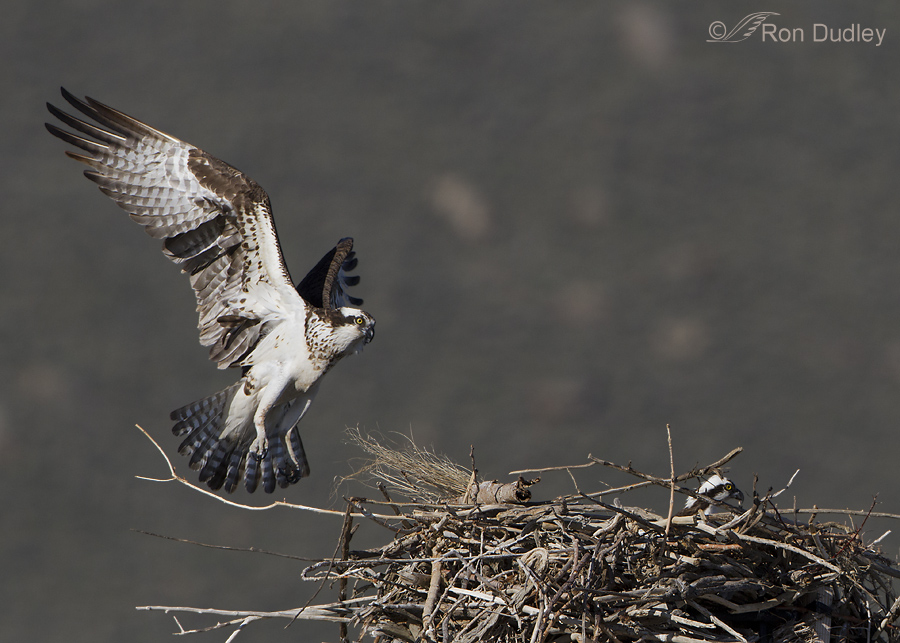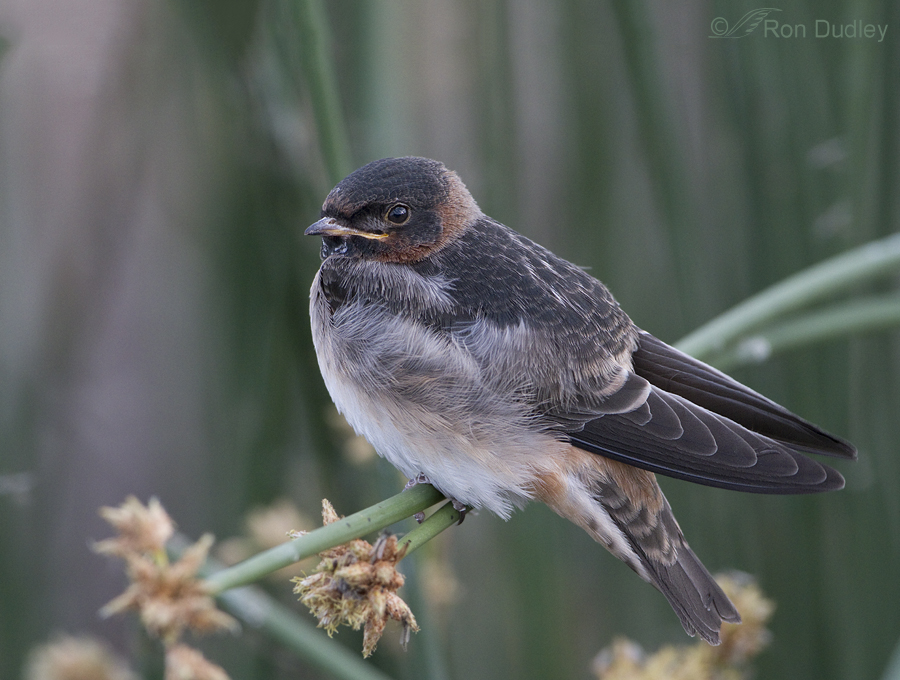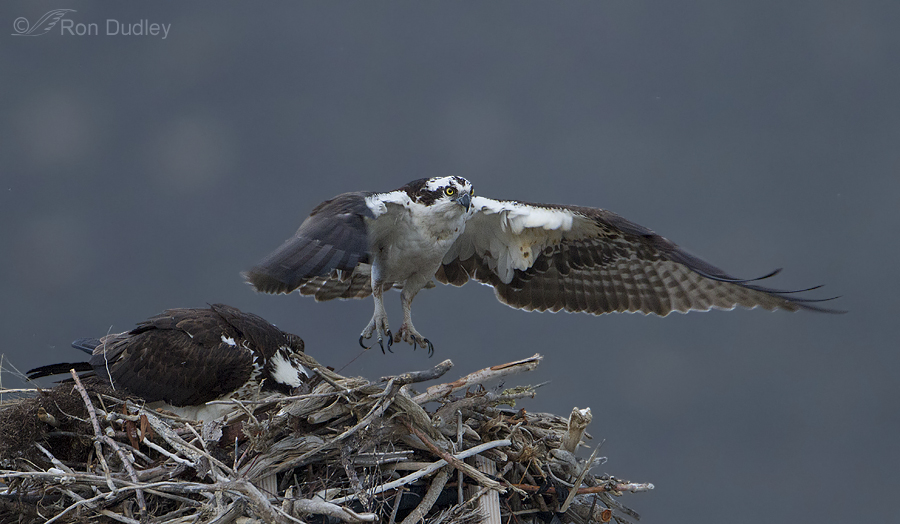Tag: nesting
Mountain Bluebird And Perch – Both Battered and Bruised
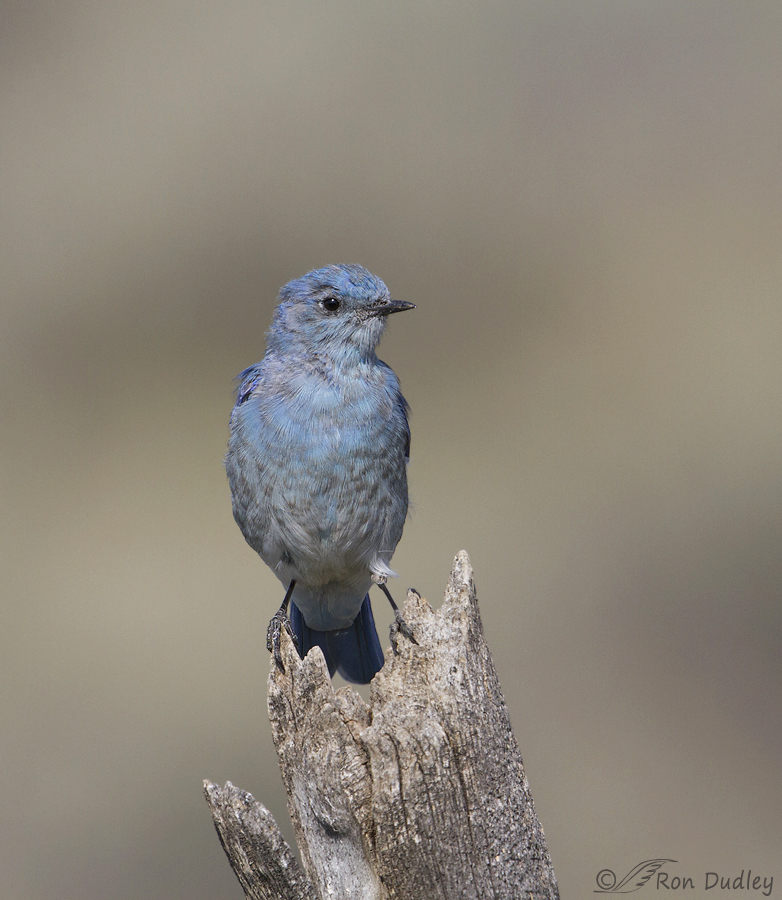
Conditions are tough in the Centennial Valley of Montana, for both the living and the long-dead.
I realize that this image isn’t likely to have universal appeal, partly because the bluebird is in pretty rough condition. But so is the fence post and there’s just something about that visual congruity that grabs me.
Williamson’s Sapsucker Leaving The Nest-hole
Male Western Kingbird Greeting His Lady
Osprey Changing Of The Guard
Fledgling Cliff Swallow
Osprey Behavior – Something I Hadn’t Noticed Before
Long-billed Curlew And Fledgling
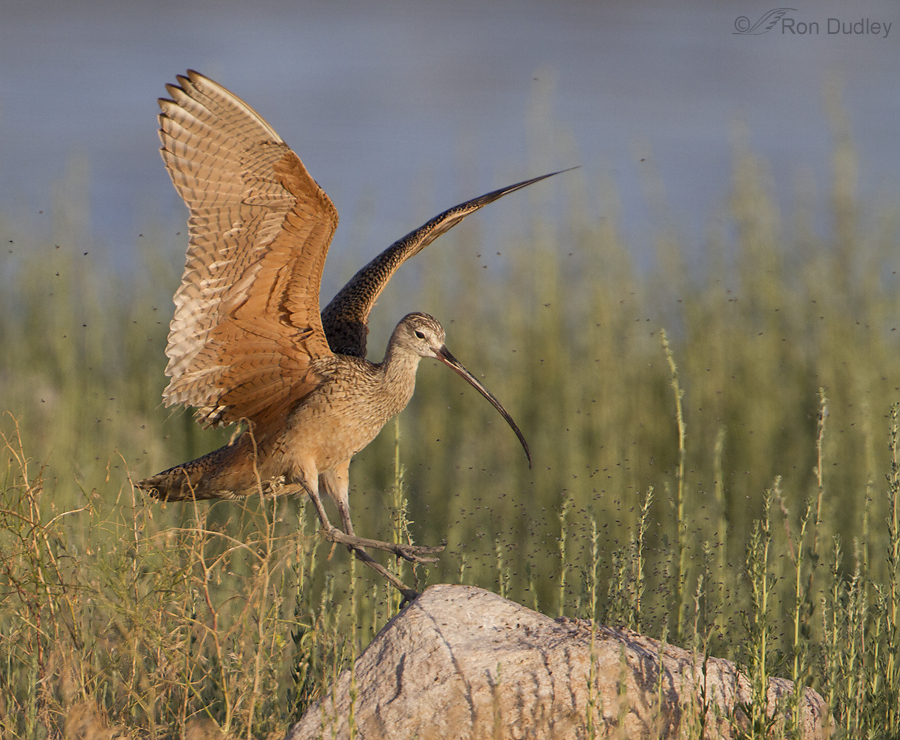
Long-billed Curlews spend most of the late spring and early summer at mid-elevations on Antelope Island while nesting and raising their chicks but by this time of year they begin to bring the youngsters down to the shoreline. That’s where I photographed this lone adult with a single youngster yesterday morning.
Barn Swallow
I’ve always had a “thing” for Barn Swallows. I’m sure it goes back to my childhood on the family farm in Montana where they nested in huge numbers on and in all of the many old barns, granaries and outbuildings. As a kid I spent many hours watching their graceful flight with their long forked tail and pointed wings being quite distinctive. Another thing (besides the fond memories) that I’m indebted to them for is that the species indirectly led to the beginning of the conservation movement in the United States. The destruction of Barn Swallows for the millinery trade (those long tail feathers were apparently considered very attractive on the hat of a lady) during the 1800’s led to George Bird Grinnell’s article in Forest and Stream in 1886 that prompted the founding of the first Audubon Society. Hooray for Barn Swallows ! I think the way they’ve adapted to man is fascinating. They’re now the most abundant and widely distributed swallow in the world and originally they nested almost exclusively in caves but with the advent of human structures that has changed dramatically. They have almost completely converted to nesting in or on man-made structures like bridges, culverts and the eaves of buildings. In fact, in modern times any Barn Swallows found nesting on natural sites create quite a stir among birders and are often reported with much interest. 1/640, f/8, ISO 500, 500 f/4, 1.4 tc, natural light But I must admit that I also enjoy them in natural settings. I found this bird at Bear River MBR where…
Magpie Nesting Season Has Begun
I’ve spent the last two mornings photographing Black-billed Magpies in the midst of nest construction. These birds often re-use old nests and this is at least the third year they have used the same one. Even when “recycling” the nest like this, weeks of work go in to refurbishing it – they bring in a completely new lining of grass, mud, rootlets and even bison fur. And they add an amazing number of new twigs to the basic structure. These are industrious birds! I’ve said before that this species is my most challenging avian photographic subject and that fact has been reinforced this week. There are several reasons for that, including: the deep black and bright white combination is hugely difficult to expose properly that aggravatingly long tail makes composition difficult and it is very easy to clip or cut off in action shots they close their nictitating membrane more than any other bird I’ve photographed and when they do its color is a blue-white which is almost shockingly apparent against the black head when they take off from an elevated perch they typically flap once and then fold their wings tightly against the body at exactly the moment when it’s easiest to get them in flight, resulting in what I call a “torpedo-bird” flight posture that is less than desirable the dark eye set against a black head makes it very difficult to get a good catch light in the eye In the last two days I’ve taken over 1200 shots of these magpies and about 95% of them were garbage, largely due…
Cliff Swallows In Flight
Cliff Swallows are one of North America’s most social land birds. Their nesting colonies sometimes consist of up to 7,000 individuals. Originally they were birds of the western mountains where they nested under horizontal rock ledges in canyons and foothills but in the last 150 years their range has expanded to include most of the continent due to the construction of buildings, bridges and highway culverts that provide alternative nesting sites. But holy moly, are they ever difficult to photograph in flight! I suspect that most serious bird photographers have attempted swallow (any species) flight shots and I’m no exception. But their small size combined with their swift, erratic flight has always stymied me. Until last May I didn’t have a single legitimate “keeper” of any swallow species in flight but that spring I was finally able to get some shots I like but it took some significant alteration of my past strategies. 1/3200, f/7.1, ISO 800, 500 f/4, natural light One of my problems in the past was that the bird was nearly always shaded underneath. So finally it struck me (duh!) that I needed to be shooting them when the sun was very low – for me that meant early in the morning. 1/2500, f/6.3, ISO 800, 500 f/4, natural light But shooting flight shots just as the sun comes up provides another problem – sufficient shutter speed. At that time of day the light intensity is relatively low so I needed to be shooting at the effective noise limit of my Canon 7D – ISO 800….
Great Horned Owls On The Montana Family Farm
Note: When I first started blogging 19 months ago, I somewhat arbitrarily decided to post my photos at 720 pixels on the long side. It didn’t take me long to change my mind and begin posting significantly larger images for the much better quality that becomes apparent at that larger size. Since that time I’ve pretty much ignored those early posts, until yesterday when Ingrid Taylar brought my attention to this Great Horned Owl post and it reminded me just how small the images are. So, I’ve decided to repost a very few of those very early works, with some additions and changes which will include: larger images – 900 pixels on the long side additional images, in most cases techs included with the photos updated narrative I’m thinking there might be two or three of these reposts over the next several weeks. I hope you’ll bear with me… For many years now there has been at least one pair of nesting Great Horned Owls on the farm where I grew up near Cut Bank, Montana. They were never there when I was a kid but they’ve sure taken to it since. This farm still seems like home to me and I return to it at least once every year for a visit with family and of course to check up on the owls. It’s the perfect place for these birds as it’s isolated, there are many old barns and granaries for the owls to find sanctuary and the area is literally crawling with field mice, voles and the ubiquitous Richardson’s Ground Squirrel…
Short-eared Owls Defending Their Nest Against Predators
Recent reports from others indicate that bird activity on Antelope Island is slowing down now and our experience out there recently would agree with that assessment so yesterday when Mia and I were trying to decide where to go shooting birds we were a little hesitant about another trip to the island. But even with things slowing down we almost never fail to find something interesting to photograph and yesterday was certainly no exception! Canon 7D, 1/800, f/7.1, ISO 500, EV 0, 500 f/4, 1.4 tc Soon after arriving on the island we noticed a pair of Short-eared Owls, obviously mated based on their behavior. Canon 7D, 1/1000, f/7.1, ISO 500, EV 0, 500 f/4, 1.4 tc This owl was carrying a vole and we immediately suspected that the pair had a nest in the vicinity, which turned out to be true. It was quite a distance from the road and buried in vegetation but we could tell its location by watching this owl deliver food to the nest site – either to the mate or to both the mate and chicks. We watched and photographed the birds for a while but when things slowed down we went further down the island. Canon 7D, 1/1600, f/8, ISO 640, EV + .67, 500 f/4, 1.4 tc On our return to the area of the nest we immediately saw a quickly developing drama. A young coyote had apparently just crossed the road and was approaching the nest area and the owls were in…
Black-billed Magpie Nesting Behavior
This past spring and summer I had the opportunity to observe and photograph nesting behaviors of Black-billed Magpies on Antelope Island in northern Utah. Magpies are common in Utah and much of the western US but they’re typically difficult to approach (and very challenging to photograph well because of the contrast of their coal-black and almost pure white plumage) but this pair of birds was so intent on their nest-building activities that they virtually ignored my presence. Mated pair of Black-billed Magpies Magpies are monogamous and typically mate for life. This is a mated pair on top of their domed nest in a sagebrush. The male is on the left, the female on the right – males are about 20% larger than females so they are sexually dimorphic. As you can see from the muddy bill of the female they’ve been actively building the mud-bowl found inside the nest. Typically the male provides the heavier branches and sticks for the nest and the female delivers most of the mud for the mud bowl, which probably explains why the female’s bill is so muddy while the male’s is not. Obtaining mud for then nest The mud for the bowl of the nest was obtained wherever the birds could find it. When we’d had dry weather they would have to fly quite a distance to get any but after a recent rain they would often get it very close by. This bird has just scooped up a bill-full. When it’s available they’ll sometimes use fresh cattle or bison dung in place…
Mountain Bluebird And Perch – Both Battered and Bruised

Conditions are tough in the Centennial Valley of Montana, for both the living and the long-dead.
I realize that this image isn’t likely to have universal appeal, partly because the bluebird is in pretty rough condition. But so is the fence post and there’s just something about that visual congruity that grabs me.
Williamson’s Sapsucker Leaving The Nest-hole
Male Western Kingbird Greeting His Lady
Osprey Changing Of The Guard
Fledgling Cliff Swallow
Osprey Behavior – Something I Hadn’t Noticed Before
Long-billed Curlew And Fledgling

Long-billed Curlews spend most of the late spring and early summer at mid-elevations on Antelope Island while nesting and raising their chicks but by this time of year they begin to bring the youngsters down to the shoreline. That’s where I photographed this lone adult with a single youngster yesterday morning.
Barn Swallow
I’ve always had a “thing” for Barn Swallows. I’m sure it goes back to my childhood on the family farm in Montana where they nested in huge numbers on and in all of the many old barns, granaries and outbuildings. As a kid I spent many hours watching their graceful flight with their long forked tail and pointed wings being quite distinctive. Another thing (besides the fond memories) that I’m indebted to them for is that the species indirectly led to the beginning of the conservation movement in the United States. The destruction of Barn Swallows for the millinery trade (those long tail feathers were apparently considered very attractive on the hat of a lady) during the 1800’s led to George Bird Grinnell’s article in Forest and Stream in 1886 that prompted the founding of the first Audubon Society. Hooray for Barn Swallows ! I think the way they’ve adapted to man is fascinating. They’re now the most abundant and widely distributed swallow in the world and originally they nested almost exclusively in caves but with the advent of human structures that has changed dramatically. They have almost completely converted to nesting in or on man-made structures like bridges, culverts and the eaves of buildings. In fact, in modern times any Barn Swallows found nesting on natural sites create quite a stir among birders and are often reported with much interest. 1/640, f/8, ISO 500, 500 f/4, 1.4 tc, natural light But I must admit that I also enjoy them in natural settings. I found this bird at Bear River MBR where…
Magpie Nesting Season Has Begun
I’ve spent the last two mornings photographing Black-billed Magpies in the midst of nest construction. These birds often re-use old nests and this is at least the third year they have used the same one. Even when “recycling” the nest like this, weeks of work go in to refurbishing it – they bring in a completely new lining of grass, mud, rootlets and even bison fur. And they add an amazing number of new twigs to the basic structure. These are industrious birds! I’ve said before that this species is my most challenging avian photographic subject and that fact has been reinforced this week. There are several reasons for that, including: the deep black and bright white combination is hugely difficult to expose properly that aggravatingly long tail makes composition difficult and it is very easy to clip or cut off in action shots they close their nictitating membrane more than any other bird I’ve photographed and when they do its color is a blue-white which is almost shockingly apparent against the black head when they take off from an elevated perch they typically flap once and then fold their wings tightly against the body at exactly the moment when it’s easiest to get them in flight, resulting in what I call a “torpedo-bird” flight posture that is less than desirable the dark eye set against a black head makes it very difficult to get a good catch light in the eye In the last two days I’ve taken over 1200 shots of these magpies and about 95% of them were garbage, largely due…
Cliff Swallows In Flight
Cliff Swallows are one of North America’s most social land birds. Their nesting colonies sometimes consist of up to 7,000 individuals. Originally they were birds of the western mountains where they nested under horizontal rock ledges in canyons and foothills but in the last 150 years their range has expanded to include most of the continent due to the construction of buildings, bridges and highway culverts that provide alternative nesting sites. But holy moly, are they ever difficult to photograph in flight! I suspect that most serious bird photographers have attempted swallow (any species) flight shots and I’m no exception. But their small size combined with their swift, erratic flight has always stymied me. Until last May I didn’t have a single legitimate “keeper” of any swallow species in flight but that spring I was finally able to get some shots I like but it took some significant alteration of my past strategies. 1/3200, f/7.1, ISO 800, 500 f/4, natural light One of my problems in the past was that the bird was nearly always shaded underneath. So finally it struck me (duh!) that I needed to be shooting them when the sun was very low – for me that meant early in the morning. 1/2500, f/6.3, ISO 800, 500 f/4, natural light But shooting flight shots just as the sun comes up provides another problem – sufficient shutter speed. At that time of day the light intensity is relatively low so I needed to be shooting at the effective noise limit of my Canon 7D – ISO 800….
Great Horned Owls On The Montana Family Farm
Note: When I first started blogging 19 months ago, I somewhat arbitrarily decided to post my photos at 720 pixels on the long side. It didn’t take me long to change my mind and begin posting significantly larger images for the much better quality that becomes apparent at that larger size. Since that time I’ve pretty much ignored those early posts, until yesterday when Ingrid Taylar brought my attention to this Great Horned Owl post and it reminded me just how small the images are. So, I’ve decided to repost a very few of those very early works, with some additions and changes which will include: larger images – 900 pixels on the long side additional images, in most cases techs included with the photos updated narrative I’m thinking there might be two or three of these reposts over the next several weeks. I hope you’ll bear with me… For many years now there has been at least one pair of nesting Great Horned Owls on the farm where I grew up near Cut Bank, Montana. They were never there when I was a kid but they’ve sure taken to it since. This farm still seems like home to me and I return to it at least once every year for a visit with family and of course to check up on the owls. It’s the perfect place for these birds as it’s isolated, there are many old barns and granaries for the owls to find sanctuary and the area is literally crawling with field mice, voles and the ubiquitous Richardson’s Ground Squirrel…
Short-eared Owls Defending Their Nest Against Predators
Recent reports from others indicate that bird activity on Antelope Island is slowing down now and our experience out there recently would agree with that assessment so yesterday when Mia and I were trying to decide where to go shooting birds we were a little hesitant about another trip to the island. But even with things slowing down we almost never fail to find something interesting to photograph and yesterday was certainly no exception! Canon 7D, 1/800, f/7.1, ISO 500, EV 0, 500 f/4, 1.4 tc Soon after arriving on the island we noticed a pair of Short-eared Owls, obviously mated based on their behavior. Canon 7D, 1/1000, f/7.1, ISO 500, EV 0, 500 f/4, 1.4 tc This owl was carrying a vole and we immediately suspected that the pair had a nest in the vicinity, which turned out to be true. It was quite a distance from the road and buried in vegetation but we could tell its location by watching this owl deliver food to the nest site – either to the mate or to both the mate and chicks. We watched and photographed the birds for a while but when things slowed down we went further down the island. Canon 7D, 1/1600, f/8, ISO 640, EV + .67, 500 f/4, 1.4 tc On our return to the area of the nest we immediately saw a quickly developing drama. A young coyote had apparently just crossed the road and was approaching the nest area and the owls were in…
Black-billed Magpie Nesting Behavior
This past spring and summer I had the opportunity to observe and photograph nesting behaviors of Black-billed Magpies on Antelope Island in northern Utah. Magpies are common in Utah and much of the western US but they’re typically difficult to approach (and very challenging to photograph well because of the contrast of their coal-black and almost pure white plumage) but this pair of birds was so intent on their nest-building activities that they virtually ignored my presence. Mated pair of Black-billed Magpies Magpies are monogamous and typically mate for life. This is a mated pair on top of their domed nest in a sagebrush. The male is on the left, the female on the right – males are about 20% larger than females so they are sexually dimorphic. As you can see from the muddy bill of the female they’ve been actively building the mud-bowl found inside the nest. Typically the male provides the heavier branches and sticks for the nest and the female delivers most of the mud for the mud bowl, which probably explains why the female’s bill is so muddy while the male’s is not. Obtaining mud for then nest The mud for the bowl of the nest was obtained wherever the birds could find it. When we’d had dry weather they would have to fly quite a distance to get any but after a recent rain they would often get it very close by. This bird has just scooped up a bill-full. When it’s available they’ll sometimes use fresh cattle or bison dung in place…


